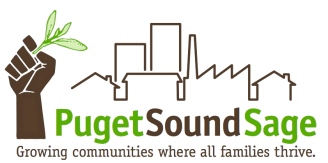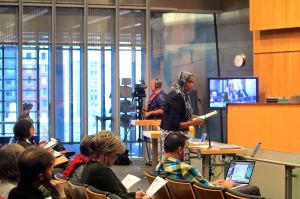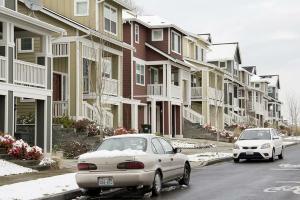-By the Staff of Puget Sound Sage
Puget Sound Sage joined as one of five signatories with affordable housing advocates, labor, and environmental organizations to an op-ed last week expressing our support for the Housing Affordability and Livability Agenda (HALA) committee’s recommendations to increase zoning density in conjunction with affordable housing strategies. Sage supports these measures because there is an affordable housing crisis, and we need more affordable housing. We support increased density, so long as upzones are implemented in conjunction with affordability measures, like a linkage fee or mandatory inclusionary housing.
As a result of years of advocacy, including co-leading a coalition of organizations fighting for inclusionary housing policies, our Mayor is now advancing a strong inclusionary housing policy — a commercial linkage fee, in conjunction with a mandatory inclusionary housing policy for residential development. The inclusionary housing policy is only one of seven recommendations we actively support. And we hope you join us in advocating for implementation of the HALA recommendations as soon as possible at upcoming City Council meetings.
The time to act is now – Tell City Council to implement the HALA recommendations as soon as possible.
But, let’s dig in a little more about why inclusionary housing is necessary, and why it is about race.
In the past few weeks, a magnitude of articles written by city news sources have accused the city of Seattle of “playing the race card” in justifying increased density in single-family zones. In an article by the Seattle Times Editorial Board, published on July 22nd, Seattle City Councilmember Bruce Harrell was quoted as saying, “Housing policies are largely governed by socioeconomic patterns . . .[y]es, we can agree there’s a huge overlap between poverty and communities of color. But to suggest that in 2015 there’s a conscious attempt to exclude in terms of zoning decisions based on race — that almost distracts from the issue.”
We would have to agree with Harrell, there is not a current ordinance that racially restricts zones. However, the key word in Harrell’s quote is “conscious.” Just because it is not “conscious” does not mean that the impact of current zoning laws that result in the exclusion of communities of color from certain zones is not racist. Actually, this is called de facto segregation, and we wrote an op-ed back in March about how development in accordance with a history of racially-restrictive covenants contributes to its perpetuation.
The “socioeconomic patterns” of development, in Seattle, as well as nationally, have largely been governed by five factors: 1) a history of racially restrictive covenants; 2) redlining; 3) lack of jobs available to people of color; 4) exclusionary zoning; and 5) poorly regulated economic growth and gentrification that lead to displacement. For the purpose of this blog, we will not delve into these factors. However, in a July 28th article, the Stranger paraphrases Seattle Civil Rights and Labor History Project by stating “racist covenants were merely a convenient substitute for racist zoning, which was outlawed.” This truth offers fodder for those who love to trump the semantic argument “but the zoning wasn’t actually racist, it is classist. This conversation isn’t helpful.”
We disagree. We think this conversation is helpful, not to self-righteously point accusatory fingers or judge individuals, but to help us advance solutions for lasting affordability. Placing a spotlight on current zoning impacts prevents an “out-of-sight, out-of-mind” mentality that passively allows for perpetuation displacement of communities of color and de facto segregation well into the future.
Exclusionary zoning like single family zoning is the historical implementation of facially “race-neutral” land use laws that were deliberately crafted to keep people out, such as the disallowance of multifamily homes, and single family homes affordable to low and moderate income people (we’re not going to even touch the environmental impacts of these policies). Coupled with discrimination by banks, landlords, neighbors, it is even more difficult for people of color to access single family neighborhoods that are also unaffordable.
Moreover, displacement due to rising rents and foreclosures disproportionately impacts people of color, putting access to single-family homes even further out of reach for many people of color. Thus, the impact is disproportionately racist, and therefore, racist. The City has taken steps to acknowledge the impacts of institutional racism through it’s Race and Social Justice Initiative, and eliminating racial disparities is going to take exactly the kind of thoughtful policy interventions outlined in the HALA recommendations.
So, back to the solutions. Here are 7 policies from HALA, among others, we think are a step in the right direction.








